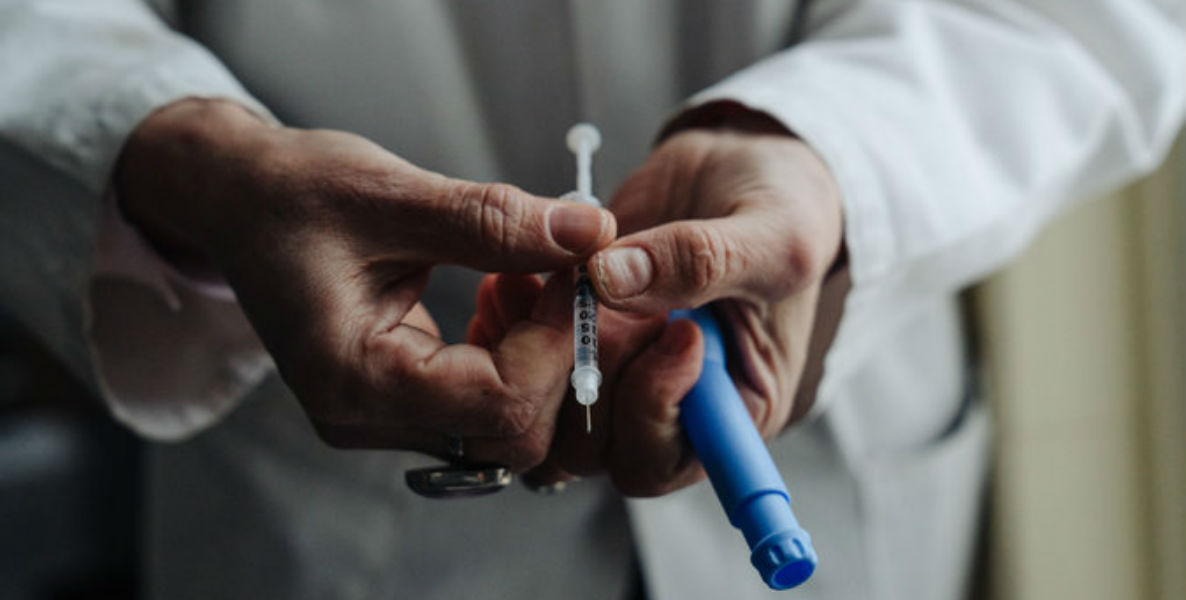In 2014, Penn ob/gyns Adi Hirshberg and Sindhu Srinivas found themselves facing a disheartening conundrum: They spend their days working to bring lives safely into this world. But at the same time, mothers in Penn’s Health System were dying preventable deaths more often than they should.
That year, the number one cause of maternal hospital readmissions and maternal mortality at Penn was preeclampsia, a complication of pregnancy characterized by high blood pressure that afflicts seven percent of American women and contributes to Philly’s especially high rate of post-delivery fatalities.

The doctors knew that careful monitoring of blood pressure in the days and weeks after childbirth were the best way to ensure women at risk of preeclampsia were catching the symptoms before they became deadly. They also knew how difficult it was to get women to doctors’ offices in those exhausting days after their delivery. Of women who are asked to return to their ob/gyn for a followup blood pressure reading, only about 30 percent show up.
![]() So Hirshberg and Srinivas, both also professors at Penn’s School of Medicine, came up with a workaround: Heart Safe Motherhood, which is both incredibly simple and incredibly effective: It sends at-risk moms home with a blood pressure cuff, and texts them to ask for the readings. “Three to five days after delivery is when women are most likely to have high blood pressure, but women get discharged at day two or three,” explains Hirshberg, Heart Safe Motherhood’s director of clinical operations.
So Hirshberg and Srinivas, both also professors at Penn’s School of Medicine, came up with a workaround: Heart Safe Motherhood, which is both incredibly simple and incredibly effective: It sends at-risk moms home with a blood pressure cuff, and texts them to ask for the readings. “Three to five days after delivery is when women are most likely to have high blood pressure, but women get discharged at day two or three,” explains Hirshberg, Heart Safe Motherhood’s director of clinical operations.
If their blood pressure is too high—which occurs in about 15 percent of enrolled women—doctors can then prescribe medication or instruct them to come back in for treatment. At-risk moms also receive a link to a short video about preeclampsia to help them better understand the risks of the condition.
In a randomized controlled trial of the program, doctors received one blood pressure reading from 92 percent of the 103 women enrolled, compared to 44 percent of 103 women who were asked to come in for an appointment, and both readings from 84 percent of women enrolled. None of the women enrolled in the program were readmitted to the hospital as a result of preeclampsia, compared to three percent of women assigned to check-up appointments. In everyday practice, the percent of women who engage with the system is very similar.
In addition, the intervention completely eliminated the racial disparity that is common in blood pressure check-up appointments: In the RCT, white women assigned to office visits were much more likely to attend than were black women, but the two groups were equally as likely to engage via text.
Heart Safe Motherhood addresses a scary fact of American healthcare: That the U.S. has among the highest rate of maternal mortality of any developed country.
The program is now automatized and is the standard of care in three of Penn’s hospitals—the Hospital of the University of Pennsylvania (HUP) starting in 2017, Pennsylvania Hospital in 2018, and Princeton Health in 2019. Between March 2018 and 2019, 1,400 women were enrolled in the program at HUP alone. The whole thing costs around $50 to $70 a patient, with $30 paying for the blood pressure cuff and the rest a per-patient cost for the software used, depending on how many patients you have using it.
Heart Safe Motherhood addresses a scary fact of American health care: That the U.S. has among the highest rate of maternal mortality of any developed country.
Between 700 and 900 American women die every year from pregnancy or childbirth-related causes. Seven percent of those die from preeclampsia; when you consider associated conditions like strokes, that number rises to 20 percent.
As Serena Williams famously pointed out after her near-fatal scare, maternal mortality disproportionately impacts black women in the U.S. But it is, also, mostly preventable.
In the United Kingdom, for example, fewer than 1 in 1 million women die from ![]() preeclampsia, and being pregnant and giving birth is so safe that “a man is more likely to die while his partner is pregnant than she is.”
preeclampsia, and being pregnant and giving birth is so safe that “a man is more likely to die while his partner is pregnant than she is.”
That’s partly why in 2014, new medical guidelines said women should actually come in twice to have their blood pressure read: once at 72 hours and once at seven to 10 days.
“If you have those two values, you can keep these women safe post discharge,” says Roy Rosin, Penn Medicine’s chief innovation officer. “At the time, we didn’t have those two blood pressure values for anyone.”
Hirshberg says the impact of Heart Safe Motherhood on moms is two-fold. “On the one hand it’s making the transition out of the hospital easier for women who have no issues. It keeps them home with their baby and allows them to bond. They’re still getting the care they need, but they can stay home,” she explains. “The people who are sick, though, are recognizing it sooner. We can treat them without coming into the hospital.”
“The best way to scale is to do things that don’t scale,” says Rosin. “The very low batting average historically in innovation is that everyone is trying to scale out of the gate but we’re scaling things that don’t work. You have to figure out what works, then scale it.”
And in the case of women who do need to be hospitalized, the early recognition can save their lives.
Five years ago, though, Hirshberg and Srinivas thought that it wasn’t necessarily getting to the office, but making it to a pre-scheduled appointment that was the problem. So they started offering walk-ins for the blood pressure check-ins every other week, then, when that didn’t help, everyday. Then they started calling patients to remind them, then texting them. Nothing worked.

“All these things that we thought were the issue weren’t,” explains Hirshberg. “We realized, it’s not how frequently we offer appointments, it’s just getting into the office.”
Around this time, Hirshberg and Srinivas began receiving support from the Innovation Accelerator program through Penn Medicine’s Center for Health Care Innovation. The team, interested in using texting as a novel approach to health care communication, started testing what would happen if they sent a small group of patients home with a blood pressure cuff and checked in with them throughout the day.
Though it might seem like an obvious solution today, according to Rosin, “At the time, texting was not an accepted modality in health care.”
The results were staggering. “It was stunningly successful,” says Katy Mahraj, the director of operations for the Acceleration Lab and a team member assigned to the project. “Patients really liked it and the doctors were able to get data in a timely manner.”
Over the course of seven small rounds of piloting with 30 patients, 84 percent of patients submitted at least one blood pressure reading, and 69 percent of patients sent readings on five of the seven days asked.
The team tried something new in each of the seven rounds. Hirshberg, who sent all of the text messages herself during the pilot, would personalize the messaging by adding the patient’s or baby’s name to the text, or make it more goal-oriented by congratulating the patient on submitting readings so frequently and saying how many more days she had to submit them for.
![]() Nothing had much of an additional impact on top of the success of simply texting them, though. “Just the sheer convenience of it was really what made the big difference,” says Mahraj.
Nothing had much of an additional impact on top of the success of simply texting them, though. “Just the sheer convenience of it was really what made the big difference,” says Mahraj.
Having Hirshberg send the texts herself in the beginning rather than using an automated system from day one was intentional, and is called a “fake backend” in the innovation world. Before they scaled up the intervention, they had to see what would work.
“We didn’t know what they would respond to or if they would respond at all,” says Rosin. “The best way to scale is to do things that don’t scale. The very low batting average historically in innovation is that everyone is trying to scale out of the gate but we’re scaling things that don’t work. You have to figure out what works, then scale it.”
In the final round, Hirshberg intentionally took any variation out of her texts, to make sure patients would still respond to the texts even when it seemed to be coming from an automated system—and they did. It was time to go big.
“Instead of making their lives bend to the health system,” says Mahraj, “we needed to bend to where the patients were.”
Today, patients who are enrolled in the program text and receive responses from an automated system. If their blood pressure reading is unusual, the system notifies the doctor, who can then get in touch with the patient and prescribe or adjust medication or give further instructions.
The project has won five different medical innovation awards since its 2014 origins, including a Clinical Innovation Award from health care services company Vizient. Now, they’ve set their eye to expanding nationally in the hope of further decreasing the number of women we lose each year to the condition.
“We’re not necessarily expanding it and going to monitor the entire country’s blood pressure ourselves, but we can offer assistance and technology,” says Hirshberg. “We can adapt what we’ve learned to fit what they can provide.”
While not every mom of a newborn in the United States can yet text her ob/gyn about her blood pressure, state governments across the country have been busy establishing Maternal Mortality Review Committees (MMRCs), groups responsible for reviewing the death of every woman in the state and determining whether her death was preventable. In 2017, just 26 of 50 states had an MMRC, but today, all but four do.
A similar national committee in Britain that reports out lessons learned from maternal deaths, presumably leading to changes in practice, along with more rigid standardization in maternal care, is credited for the country’s own low maternal mortality, where women are four times less likely to die during pregnancy, childbirth, or in the year after due to pregnancy-related health issues than are American women.
Philadelphia, along with New York City, is one of just two cities in the country that has a local Maternal Mortality Review Committee.
While a promising trend, the yearly 800 or so maternal deaths in the United States—and the 27.4 deaths per 100,000 live births in Philadelphia, a rate worse than those in all but six states—won’t disappear without more rapid innovation like what’s happening at Penn, and more strategic thinking that identifies ways that the design of the health care system might be preventing patient success.
“Instead of making their lives bend to the health system,” says Mahraj, “we needed to bend to where the patients were.”
Want more health care innovation news? Check out these related articles:
- Comcast and IBX form Quil Health to tackle high healthcare costs
- Penn Medicine breaks down barriers for patients with opioid use disorder
- Philly-based startup Fellow may have solved one of health care’s biggest crises
Photos courtesy Penn Medicine








